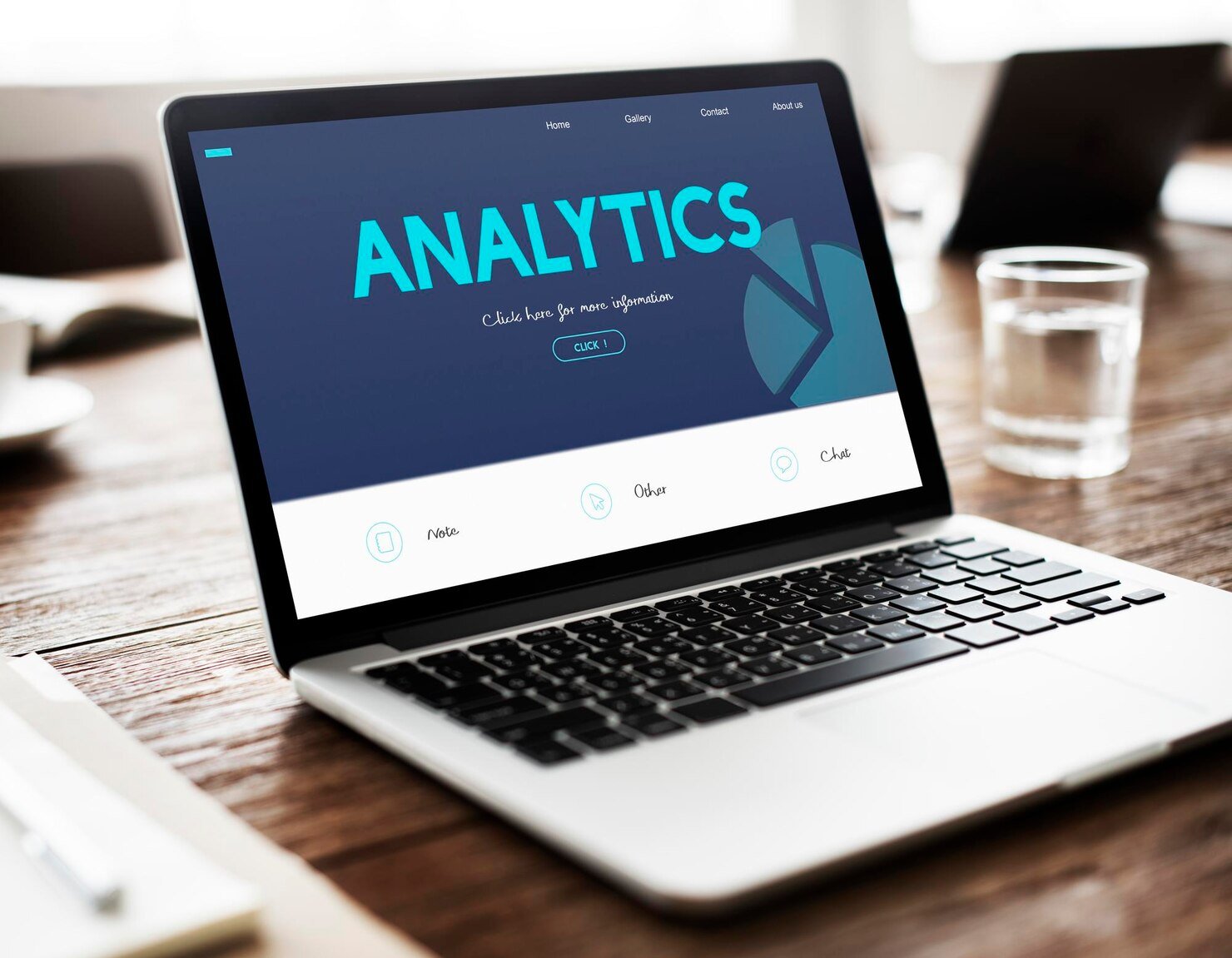- How to Use Web Analytics to Improve Your Marketing - October 21, 2025
- Video Marketing Ideas for Small Businesses - October 21, 2025
- Understanding Customer Journey Mapping in Marketing - October 21, 2025
Digital marketing has become an essential part of business growth, but understanding the return on investment (ROI) for your campaigns remains one of the biggest challenges. Many marketers pour time, money, and energy into campaigns without clear insight into whether their efforts are delivering real value. Measuring ROI in digital marketing is no longer optional—it’s critical for making informed decisions, optimizing strategies, and justifying budgets.
At Design Flash, we’ve helped countless small businesses, startups, and freelancers navigate this challenge. In this guide, we’ll explore practical ways to calculate ROI, tools that can help, common pitfalls, and actionable strategies for 2025 and beyond.

Why Measuring ROI Matters in Digital Marketing
ROI is the ultimate measure of success. It allows marketers to answer the question: “Are my campaigns generating more value than they cost?”
Without measuring ROI, you’re essentially running campaigns blindly. You might spend on social media ads, email marketing, or content creation without knowing which activities actually drive growth.
Measuring ROI helps marketers:
- Optimize budgets by focusing on high-performing channels
- Justify marketing spend to stakeholders
- Identify campaigns that underperform and need adjustment
- Make data-driven decisions for long-term growth
At Design Flash, we emphasize that ROI measurement is not just about numbers—it’s about insights. A campaign may generate leads but fail to convert, or it may drive website traffic without improving revenue. Accurate measurement reveals the full picture.
Understanding ROI in Digital Marketing
In its simplest form, ROI measures the profit generated relative to the cost of an investment. The basic formula is:
ROI (%) = (Revenue from Campaign – Cost of Campaign) ÷ Cost of Campaign × 100
For example, if you spent $500 on a social media campaign and generated $2,000 in revenue, your ROI would be:
($2,000 – $500) ÷ $500 × 100 = 300%
While this formula is simple, digital marketing introduces complexities. Marketing campaigns often involve multiple channels, overlapping touchpoints, and delayed conversions. That’s why marketers use both direct ROI (immediate revenue) and assisted ROI (long-term influence on customer behavior).
Key Metrics to Track ROI
Measuring ROI effectively requires tracking the right metrics. These metrics differ depending on your digital marketing channel.
Website Analytics Metrics
Your website is often the central hub for digital campaigns. Key metrics include:
- Traffic Sources: Know whether visitors come from organic search, social media, or paid ads.
- Conversion Rate: Percentage of visitors completing desired actions (purchases, sign-ups, downloads).
- Cost per Acquisition (CPA): How much each lead or customer costs.
- Average Order Value (AOV): Helps calculate revenue per transaction.
Tools like Google Analytics 4 and Hotjar allow marketers to monitor these metrics and attribute value to different campaigns effectively.
Social Media Metrics
Social media campaigns often have multiple objectives: brand awareness, engagement, lead generation, and sales. Important metrics include:
- Engagement rate (likes, comments, shares)
- Click-through rate (CTR) to landing pages
- Conversion rate from social campaigns
- Customer acquisition cost from social channels
Platforms like Meta Business Suite, LinkedIn Analytics, and Twitter/X Analytics provide free insights to track ROI for social campaigns.
Email Marketing Metrics
Email marketing remains one of the most measurable digital channels. Key metrics for ROI include:
- Open rate: Indicates audience interest
- Click-through rate (CTR): Measures engagement with your content
- Conversion rate: Tracks actual revenue generated
- Bounce rate and unsubscribe rate: Helps refine targeting
Free tools like Mailchimp, Sender, and Benchmark Email allow marketers to monitor ROI even on a tight budget.
Content Marketing Metrics
Content marketing often influences ROI indirectly, making measurement more complex. Metrics include:
- Organic search traffic to blog posts
- Time on page and bounce rate
- Lead generation via gated content
- Backlinks and social shares
At Design Flash, we emphasize combining engagement metrics with revenue tracking. For example, a blog post might not generate direct sales but could drive email sign-ups or nurture leads for future conversion.
Tools to Measure ROI Effectively
Several free and paid tools can help marketers measure ROI accurately:
- Google Analytics 4: Tracks website traffic, conversions, and revenue attribution
- HubSpot CRM (Free Plan): Manages leads and tracks interactions to tie campaigns to revenue
- UTM Parameters: Tagging campaigns to track which channels generate the best ROI
- Hotjar: Understands user behavior to improve conversion rates
- Mailchimp / Sender: Track email performance and revenue impact
Using a combination of these tools provides a comprehensive view of ROI across all campaigns.
Attribution Models in Digital Marketing
Digital marketing campaigns often involve multiple touchpoints before a conversion occurs. Understanding attribution models is essential for measuring ROI accurately.
- First-Touch Attribution: Gives credit to the first interaction that led to conversion
- Last-Touch Attribution: Credits the final touchpoint before purchase
- Linear Attribution: Distributes credit equally across all touchpoints
- Time-Decay Attribution: Gives more weight to recent interactions
Selecting the right attribution model helps marketers understand which channels truly drive ROI and optimize campaigns accordingly.
Common Challenges in Measuring ROI
Even with tools and models, measuring ROI is not without challenges.
- Multi-Channel Complexity: Customers interact with brands across multiple platforms, making it hard to assign value accurately.
- Delayed Conversions: Some campaigns influence sales months later, complicating short-term ROI calculations.
- Non-Monetary Goals: Some campaigns aim for engagement, awareness, or loyalty rather than immediate revenue.
- Data Accuracy: Incomplete tracking or improper tagging can lead to misleading results.
At Design Flash, we recommend combining quantitative metrics with qualitative insights to get a holistic view of ROI.

Strategies to Improve Digital Marketing ROI
Measuring ROI is only useful if you use insights to optimize campaigns. Strategies include:
- Regularly audit campaigns to remove low-performing ads or content
- Test different messaging, formats, and targeting to find what works best
- Focus on channels that generate the most revenue relative to cost
- Improve customer journey by analyzing touchpoints that lead to conversion
- Automate repetitive tasks to reduce costs and improve efficiency
By continuously monitoring ROI and refining strategies, marketers can maximize impact without increasing budgets.
The Future of ROI Measurement
In 2025 and beyond, ROI measurement is evolving with AI and automation. Predictive analytics, real-time dashboards, and machine learning allow marketers to anticipate revenue, adjust campaigns dynamically, and simulate potential outcomes before launching initiatives.
Tools like AI-driven analytics platforms and automation dashboards will make ROI tracking more accurate, actionable, and easier for small businesses to manage. At Design Flash, we believe that mastering ROI is not just about numbers—it’s about creating campaigns that resonate with your audience while generating measurable business value.
Conclusion
ROI in digital marketing is the cornerstone of strategic decision-making. By tracking the right metrics, leveraging free and paid tools, understanding attribution, and continuously optimizing campaigns, marketers can ensure every dollar spent works harder for their business.
At Design Flash, we’ve seen businesses transform when they focus on ROI rather than vanity metrics. Accurate measurement allows marketers to allocate budgets wisely, improve campaigns, and drive growth sustainably.
In 2025, the ability to measure ROI effectively will differentiate successful digital marketers from the rest. Start today by setting clear goals, tracking performance, and using the insights to make smarter marketing decisions. With the right approach, ROI is no longer a mystery — it’s a powerful tool for growth.

